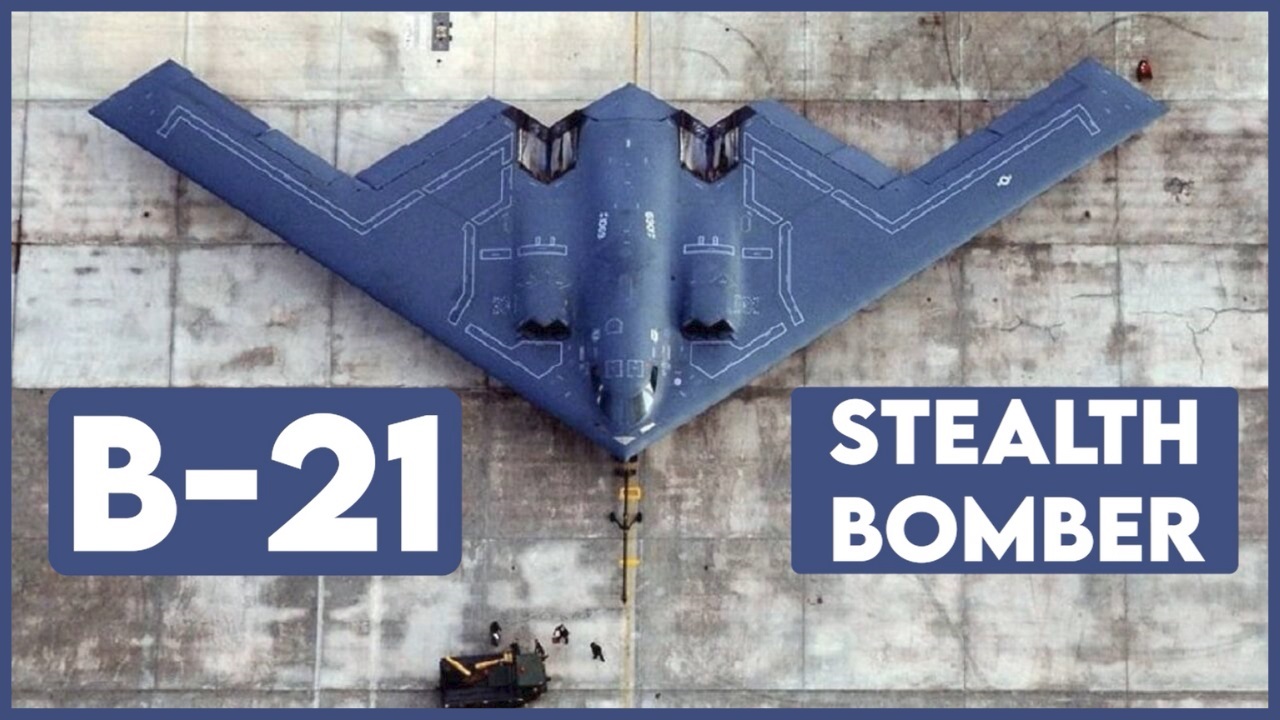During a US Senate Armed Services Committee hearing on February 29, the chief of the US Strategic Command emphasized the need to produce B-21 bombers at a faster pace and wanted to acquire more than 100 aircraft.
General Anthony J. Cotton, USAF, Commander, United States Strategic Command, told the committee, “The limited production rate of the B-21 is the only thing that I wish we could do a little quicker.”
Emphasizing the cutting-edge capabilities of the platform, Cotton said, “The fact that it is an incredible sixth-generation platform, all indications are that the weapons system is moving along at a great pace as far as delivery. The ability for production and the number of production, as a warfighter, obviously I would love more.”
“It’d be nice to have more than 100,” Sen. Tom Cotton (R-Ark.) insinuated. “Yes sir,” Gen. Cotton replied without giving a specific number of B-21 Raiders he would like to see going into production.
As per the plan, long-range bombers in the US fleet will be replaced by the stealthy B-21 instead of the Air Force’s B-1 Lancers and B-2 Bombers. The Pentagon has said it intends to purchase 100 of these bombers, with deliveries scheduled to begin in the middle of the 2020s.
The Pentagon’s acquisition chief, William LaPlante, announced in January that the B-21 had entered production. The low-rate production was authorized in the fall of 2023 following the impressive results of ground and flight testing.
“One of the key attributes of this program has been designing for production from the start — and at scale — to provide a credible deterrent to adversaries,” LaPlante said. “If you don’t produce and field warfighters at scale, the capability doesn’t really matter.”
The B-21 is a next-generation bomber aircraft positioned as a challenger to China in a potential military conflict. The bomber is thought to be essential for breaking through enemy radars and air defenses through stealth and electronic jamming.
There is urgency to field the bomber as the assessments of a possible military clash with China or Russia have been consistently higher.
The B-21 is expected to be pivotal in any potential conflict with China in the Indo-Pacific. The Raider can conduct conventional strikes and carry out several other tasks. It will likely play a crucial part in the future of the United States’ nuclear deterrent triad.
In the event of a conflict, it is believed that the B-21 Raider would seek to breach China’s formidable anti-access/area-denial (A2/AD) shield and launch ground strikes to destroy critical targets.
This may become imperative given that China has a sophisticated air force with operational stealth aircraft, a broad and diverse air defense system, and long-range anti-ship and anti-land missiles that can keep the US Navy fleet at bay.
According to reports, the B-21 would bust through and destroy critical enemy installations, command and control, and radar centers. Among the many diverse bombs and missiles carried by the B-21 are expected to be the GBU-57 bunker-destroying bomb, the GBU-31 JDAM satellite-guided bomb, and the JASSM-ER cruise missile. The bomber can launch, fly back, and drop bombs on Chinese targets.
China earlier expressed skepticism over the US capability to produce the aircraft just two months after the first flight, writing it off as a hasty decision fueled by US obsession with containing China. If the production were to increase, it would likely lead to more frowns from Beijing.
The B-21 Raider Is Coming Soon
The B-21, hailed by the US Air Force as the world’s first six-generation aircraft, promises a new era of capability and flexibility by seamlessly integrating data, sensors, and weapons.
In December 2022, at Air Force Plant 42 in Palmdale, California, the Air Force and Northrop Grumman successfully launched the first B-21 in a well-reported ceremony. Tests on that first B-21, dubbed Cerberus, went on at Plant 42 for most of 2023 until November, when it made its maiden flight to Edwards Air Force Base in California.
The service has confirmed that five other aircraft, in addition to the first bomber, are under development at Plant 42 and that at least five of the six B-21s would be used for testing. Those aircraft will have their test instruments removed and converted into operational bombers once developmental and operational testing is over.
The B-21 acquisition program is managed by the Air Force Rapid Capabilities Office, which is using a novel approach that closely matches test aircraft to production variants. This departure from conventional flight prototyping sped up the start of production.
To guarantee smooth integration during the B-21’s career, the Air Force and Northrop Grumman are working together to create a “digital ecosystem.” This method entails providing the aircraft with the engineering and manufacturing data needed for production. This plan intends to improve the B-21’s affordability, scalability, and procurement through the use of contemporary maintenance and collaboration tools.
On February 8, William LaPlante allayed concerns that the B-21 stealth bomber project would experience similar difficulties to those of the failed F-35 program by clarifying that the Raider’s production rate was intentionally kept low to reduce its susceptibility to budget cuts.

Speaking at a virtual RAND (an independent, nonprofit organization dedicated to furthering and promoting scientific, educational, and charitable purposes for the public welfare and security of the United States, LaPlante hinted that while the bomber was built to endure fiscal concerns in Washington, it might never attain high production rates.
Drawing lessons learned from the F-35 program, LaPlante highlighted the issue of maintaining a consistent production rate, as deviations from planned production levels could hinder cost reduction and learning opportunities.
Currently, the combined B-1 and B-2 fleets total 64 aircraft, excluding the B-1 involved in a recent crash. Achieving full replacement by 2032 would necessitate an average annual production rate of eight B-21s.
Initially, the Air Force planned the B-21 inventory of “80-100 aircraft,” later revising it to “a minimum of 100 aircraft.”
Several think tanks, experts, and former US officials have suggested that the United States needs between 150 and 225 B-21 aircraft to sustain the level of operations required to defeat a near-peer enemy such as China and to maintain operational readiness against potential adversaries like China.
- Contact the author at sakshi.tiwari9555 (at) gmail.com
- Follow EurAsian Times on Google News




